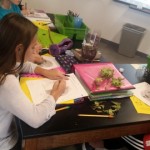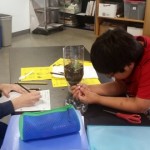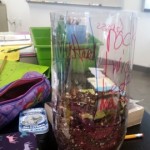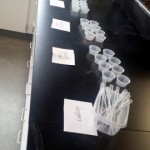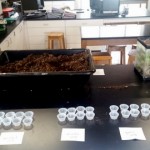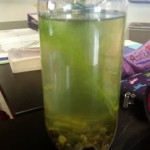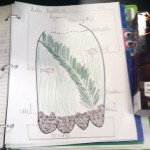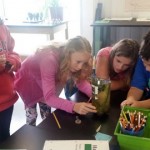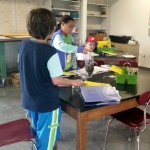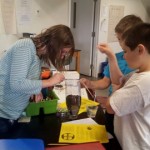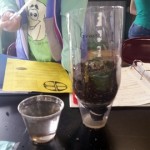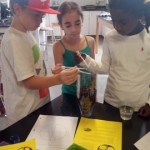From 5th and 6th Grade Science teacher, Anneke Nordmark:
In the first weeks of school, 5th graders visited Allens Creek, which borders Harley’s campus to the south, to make observations of terrestrial and aquatic habitats. We planned to study these types of habitats over a period of time and decided to create models and bring the habitats into the classroom.
Students built aquariums and terrariums in 2 liter bottles for a trimester-long study of how aquatic and terrestrial ecosystems change over time. The aquariums began with elodea, duckweed, algae, gravel and water. Later, small pond snails and mosquito fish were added. Terrariums first consisted of gravel, soil and grass, mustard and alfalfa seeds. Isopods and crickets were added after the plants had time to grow.
Students ask for observation time every class in order to examine their ecosystems and record the changes they observe. These living models have provided entry points to study many topics including photosynthesis, food webs, energy pyramids, algal blooms and more. Stop by our classroom to observe these mini ecosystems for yourself! The students would love to detail the changes they’ve witnessed over the last 12 weeks.
